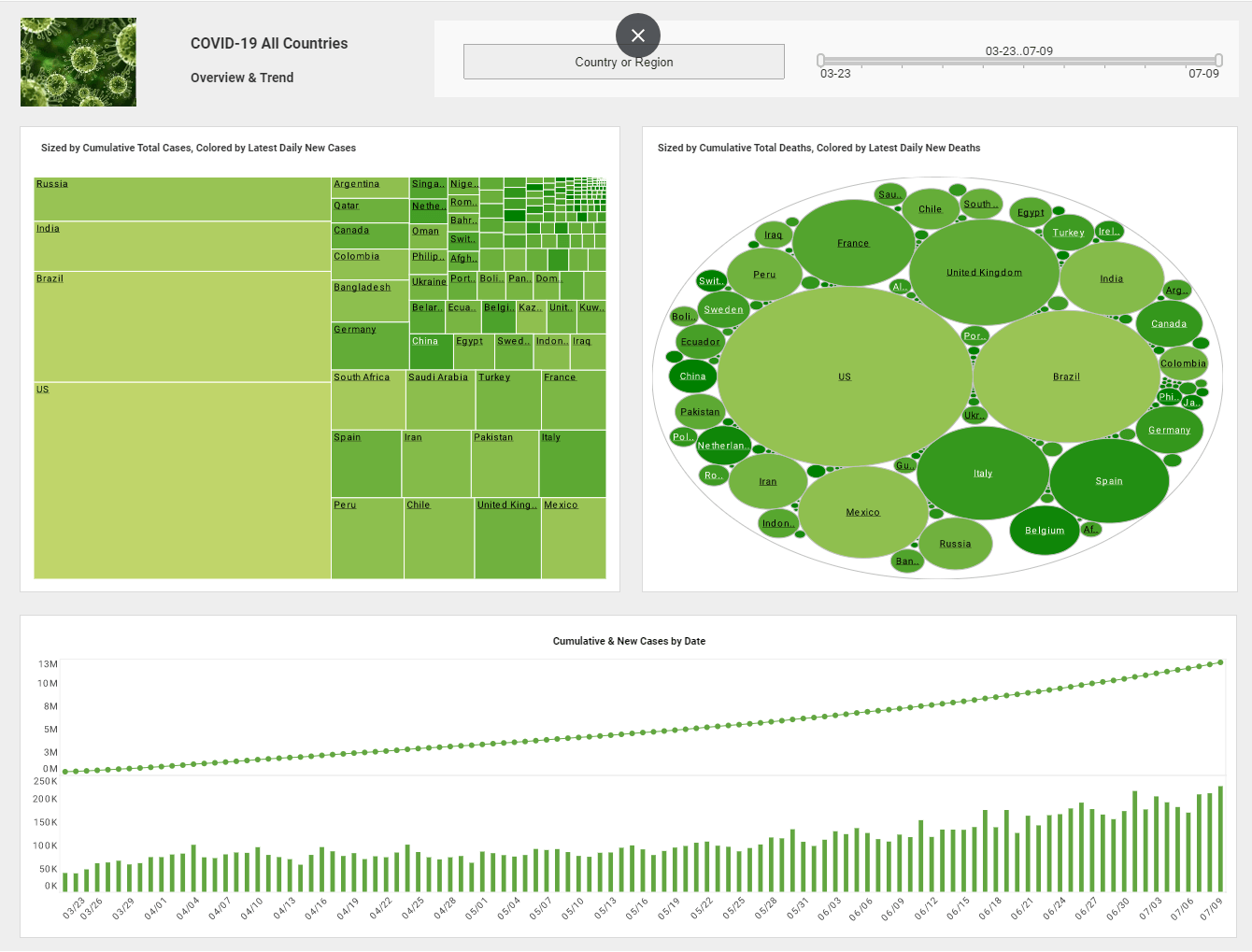Key Benefits of This Visual Reporting Solution
This is the continuation of the transcript of a Webinar hosted by InetSoft on the topic of "What are the Benefits of a Visual Reporting Solution?" The speaker is Abhishek Gupta, product manager at InetSoft.
That’s one of the key benefits of this visual reporting solution. It breaks down the cycle of pain, and as in this case, a couple of people can bounce ideas around. This could be a manager. It happens all the time a manager is going into a meeting with his bosses or the board and needs to be able to answers on the fly. With this kind of tool, he or she has got the all data there so they can answer their questions on the fly with a whole set of data in memory.
To summarize and conclude this portion of the demonstration, there’s five test of problems that we see visual reporting and analysis apply to. The first is list reduction which you saw several examples of that, certainly the university giving example on prospect identification. Next is portfolio analysis, the airline example, where you try to understand out of this portfolio of flights where do I need to focus.
This could also be assets, people, projects, or proposals. We’re doing some work that identified performance, who are high paid low performers in a team of a couple of hundred thousand in a large company.
A Good Example of Visual Discovery
It’s great for that because you can see what makes up that group. That gets into outlier detection where you found anomalies and unexpected behaviors, customer behaviors, staff performance, project progress, or medical claims issues, for instance. Another analytical use is for time series. We saw a little bit about that, but there’s a lot more you can do to look at trends overtime and cut the data apart to see overall trends. Is it going up? What is not going up within it? What makes that different from everybody else?
Quantitative analysis is not a part of today’s discussion, but there are charts we have that would show the statistical patterns. We have predictive analytics. This is good if the issue is who are my high pay low performers on my team? If you have got 200,000 people, you can run regression based modeling right off the data that’s in memory, and it will mine against the tables and tell you that you what the driving factors are.
Maybe performance is driven by seniority on the team. Maybe what types of groups they are in and so forth. Then you can score the population to identify others in a similar situation. And these are visual reporting and analysis tools are using new technologies of in memory data management. You saw several examples where we had multiple tables, and you saw how they interacted together.
Data visualization is a key aspect because you have to be able to see that data in clear and powerful ways. Predictive modeling rounds out the BI solution. So that concludes the demonstration portion of the Webinar. We have time now for the Q&A session.
A Company in the Abalone Aquaculture Industry Made the Switch From Insightsoftware to InetSoft for Its Visual Reporting Needs
As global demand for premium abalone meat rose in Asian and European markets, AquaHarvest expanded its hatchery operations, sea cages, and processing facilities. With growth came an increasing need for sophisticated data analysis—tracking everything from water quality parameters to sales and export performance. Initially, the company relied on insightsoftware’s financial reporting tools, but over time, its limitations became clear.
Limits of the Previous Stack
Insightsoftware was strong for traditional finance and ERP reporting, but abalone aquaculture’s unique operational complexities demanded more flexible and multi-source reporting. AquaHarvest needed to monitor daily environmental factors like salinity, oxygen levels, and water temperature across multiple farms, while simultaneously integrating sales forecasts, logistics, and market pricing data.
The team ran into friction with rigid templates and limited support for non-financial datasets, which required constant workarounds and costly customization. IT was bogged down exporting raw sensor data, reformatting spreadsheets, and manually merging them with accounting reports—an error-prone and time-consuming process.
Why InetSoft
The switch to InetSoft’s Visual Reporting solution was a game-changer. InetSoft’s data mashup capabilities allowed AquaHarvest to seamlessly connect to multiple sources—SCADA systems monitoring water conditions, ERP systems managing inventory and finance, and CRM platforms tracking client orders—without building a complex and expensive data warehouse.
The company created dashboards that displayed real-time metrics like tank-level oxygen fluctuations side by side with harvest yields and shipping schedules. This visibility allowed farm managers to react quickly to environmental risks that might threaten abalone health, while the executive team gained predictive insights into export timelines and pricing opportunities.
Cost Efficiency and Scalability
Another reason for choosing InetSoft was cost efficiency and scalability. Insightsoftware’s licensing fees were climbing as AquaHarvest added new data users across its expanding operations. InetSoft’s flexible licensing model and serverless dashboard microservices lowered infrastructure overhead while improving performance.
Crucially, non-technical staff—marine biologists and logistics managers—could create and customize dashboards without heavy IT involvement, increasing adoption company-wide.
Outcomes and ROI
- Reduced operational disruptions: Real-time environmental monitoring helped teams intervene earlier to protect stock health.
- Faster decision-making: Consolidated views of harvest timing, capacity, and demand improved responsiveness to market windows.
- More accurate forecasting: Integrated operational and financial data increased confidence in export and revenue forecasts.
- Lower total cost of ownership: Flexible licensing and lighter infrastructure decreased recurring costs as the user base grew.
Collaboration and Governance
The transition improved collaboration through role-based access, ensuring each department saw tailored views while maintaining security and compliance with strict seafood export regulations. Executives tracked KPIs such as feed conversion rates, mortality trends, and order fulfillment, while marketing analyzed regional sales performance and price volatility. All of this was accomplished without repetitive manual reporting tasks that had frustrated staff under insightsoftware.


